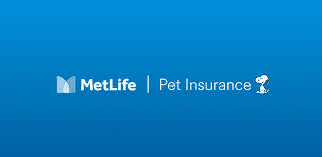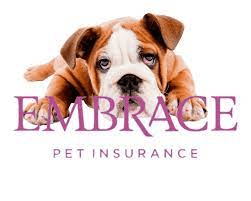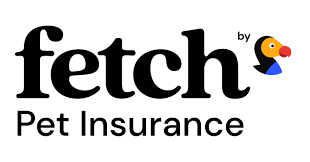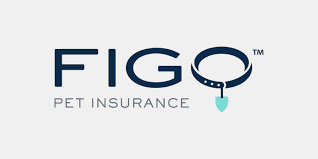Best Pet Insurance Companies for October 2023, Lemonade Pet Insurance,Metlife Pet Insurance, ASPCA Pet Insurance, Embrace Pet Insurance,Fetch Pet Insurance, Pets Best Insurance,Pawp Pet Insurance,Spot Pet Insurance, Trupanion Pet Insurance,Odie Pet Insurance,Nationwide Pet Insurance,Figo Pet Insurance.
Much like numerous other aspects of the current cost of living, the expenses associated with veterinary care for pets have been steadily increasing. In 2022, these costs surged by 10%, primarily due to factors like rising staffing expenses for veterinarians, elevated prices of medical supplies, lab-testing fees, and the use of advanced medications. As reported by the American Veterinary Medical Association, the average annual cost of veterinary visits in 2022 was $362 for households with dogs and $321 for those with cats.
If you happen to be a pet owner, which accounts for approximately 66% of U.S. households, considering pet insurance can offer relief in managing healthcare expenses for your beloved furry, feathered, or scaly companions. It’s crucial to identify which pet insurance companies provide the most cost-effective options for both your budget and the well-being of Max, your cheerful yellow Labrador, or Bella, your elegant Siamese cat. (According to the American Veterinary Medical Association, the majority of pet owners have dogs or cats, with fish and birds being less common choices as pets.)
Currently, only two states, California and Maine, have specific regulations in place governing pet insurance. However, as a response to the growing popularity of pet ownership and the expanding pet insurance market, the National Association of Insurance Commissioners (NAIC) introduced a model law in 2022, aiming to establish clear, uniform guidelines for pet insurance offerings. This model law outlines consumer protections, covering aspects like pre-existing conditions, disclosures of waiting periods before insurance coverage begins, and policy renewals.
Considering that only Maine has officially adopted the NAIC’s model law, it is more essential than ever to carefully review and comprehend the details of an insurer’s policy before committing to it. While we’ve taken steps to simplify this process for you, it’s crucial to remember that factors such as your pet’s breed and age, as well as your location (determined by your zip code), will influence the cost and the most suitable pet insurance choice for your specific circumstances. Equally important is understanding what pet insurance companies include or exclude in their coverage. Generally, pre-existing conditions, cremation and burial expenses, pregnancy and breeding-related costs, and cosmetic procedures fall into the category of items not covered by these policies.
Best pet insurance companies compared 2023
| Insurance company | Best for | Pet age restrictions | Max annual coverage | Reimbursement rates | Deductible choices | Money-back guarantee |
|---|---|---|---|---|---|---|
| Lemonade Pet Insurance | Add-ons to basic coverage | Upper age limit: 14 years | $5,000 to $100,000 | 70%, 80%, or 90% | $100 to $500 per year | 30 days |
| Metlife Pet Insurance | No upper age limit | No upper age limit | $2,000 to $10,000 | 50%, 65%, 70%, 80%, 90%, or 100% | $50 to $500 or $2,500 per year | 14 days |
| ASPCA Pet Insurance | Covering horses as well as cats and dogs | No upper age limit | $5,000, $10,000, or unlimited | 70%, 80%, or 90% | $100, $250, or $500 per year | 30 days |
| Embrace Pet Insurance | Pet wellness plan | No upper age limit | $3,000, to $10,000 | 70%, 80%, or 90% | $100, $250, or $500 per year | 30 days |
| Fetch Pet Insurance | Puppies and kittens | Lower age limit: 6 weeks; no upper age limit | $5,000, $10,000, or $15,000 | 70%, 80%, or 90% | $250, $300, or $500 per year | 30 days |
| Pets Best Insurance | Direct payment to vets | No upper age limit | $5,000 to unlimited | 70%, 80%, or 90% | $50 to $1,000 | 30 days |
| Pawp Pet Insurance | Personalized pet care | No upper age limit | $3,000 for emergency care | N/A | N/A | 30 days |
| Spot Pet Insurance | Annual coverage options | No upper age limit | $2,500 to unlimited | 70%, 80%, or 90% | $100 to $1,000 per year | 30 days |
| Trupanion Pet Insurance | Prescription foods and supplements | Upper age limit: 14 years | Unlimited | 90.00% | $0 to $1,000 (in $5 increments), per condition | 30 days |
| Odie Pet Insurance | Pet owners on a budget | No upper age limit | $5,000, $10,000, or $40,000 | 70%, 80%, or 90% | $50 to $1,000 in small increments | 30 days |
| Nationwide Pet Insurance | Covering exotic pets | No upper age limit | $10,000 for Whole Pet plan | 50% or 70% | $100 or $250 | 10 days |
| Figo Pet Insurance | 100% reimbursement rate | No upper age limit | $5,000, $10,000, or unlimited | 70%, 80%, 90%, or 100% | $100 to $1,500 per year (depending on pet’s age) |
Our recommendations for best pet insurance company for October 2023
Here’s a deeper look at the services provided by each pet insurance provider.
Best for add-ons to basic coverage: Lemonade Insurance Company

Lemonade Pet Insurance
Pet age restrictions – No upper age limit
Max annual coverage – $5,000, $10,000, or unlimited
Reimbursement rates – 70%, 80%, 90%, or 100%
Deductible choices – $100 to $1,500 per year (depending on pet’s age)
Money-back guarantee – 30 days
While Lemonade offers a single plan that covers both accidents and illnesses, it distinguishes itself by offering a more extensive selection of add-on options compared to most other companies in this category. The core policy encompasses diagnostic tests, surgical procedures, injections for covered conditions, prescription medications, and various other services. For an additional fee, you have the option to include supplementary services such as veterinary visit fees, physical therapy, dental care for illnesses, behavioral therapy, end-of-life support, and memorial services. Additionally, there are several preventive care packages available, which can help cover expenses like wellness examinations, routine blood work, vaccinations, boosters, and more. Notably, there is a specialized preventive care package tailored for puppies and kittens, offering increased coverage for vaccines, additional wellness visits, as well as spaying/neutering and microchipping.
Lemonade’s waiting periods are as follows: two days for accidents, 14 days for illnesses, and six months for cruciate ligament events. It’s worth mentioning that Lemonade insurance is exclusively available in 37 states and the District of Columbia.
The annual coverage limit varies, ranging from $5,000 to a substantial $100,000. Reimbursement rates are flexible at 70%, 80%, or 90%, and deductible options span from $100 to $500 annually. As an added benefit, bundling your pet insurance with Lemonade’s homeowners, renters, or auto insurance can qualify you for a discount. Additional discounts are offered for insuring multiple pets and paying your premium on an annual basis, rather than monthly.
click here – This map breaks down the average cost of home insurance in every state
Best for a family plan for multiple pets: Metlife All Pets Insurance

Metlife Pet Insurance
Pet age restrictions – No upper age limit
Max annual coverage – $2,000 to $10,000
Reimbursement rates – Up to 90%
Deductible choices – $50 to $500 per year
Money-back guarantee – 14 days
With over 150 years of experience in the insurance industry, MetLife has established a prominent presence. In 2019, it incorporated PetFirst, a pet insurance company with a history dating back to 2004, into its operations. MetLife offers a comprehensive plan that covers both accidents and illnesses. Additionally, they provide a preventive care plan, which includes services like dental cleanings, bloodwork, and microchipping, available for an extra monthly fee. Notably, their accident coverage starts immediately upon enrollment, beginning at midnight on the day you sign up, which is the most favorable waiting period among the providers in this category. Conversely, the waiting period for illness coverage is more standard at 14 days.
MetLife stands out by allowing pet owners with multiple animals to cover up to three pets under a single policy with a shared deductible. Deductible options span from a minimum of $50 to a maximum of $500 per year, while annual limits range from $2,000 to $10,000. They offer reimbursement rates of up to 90%, though it’s important to note that reimbursement rates may differ for MetGen underwritten policies (50%) and IAIC underwritten policies (65%).
Best for covering horses: ASPCA Pet Health Insurance

ASPCA Pet Insurance
Pet age restrictions – No upper age limit
Max annual coverage – $3,000, to $10,000
Reimbursement rates – 70%, 80%, or 90%
Deductible choices – $100, $250, or $500 per year
Money-back guarantee – 30 days
While most pet insurance plans primarily cater to dogs and cats, ASPCA Pet Health Insurance, a reputable and well-known brand, extends its coverage to include horses. Their plans encompass both accidents and illnesses, with provisions for common equine issues like colic. Additionally, you can opt to include preventive care in your policy.
For dogs and cats, ASPCA offers several coverage options. Their accident-only plan is the most cost-effective choice, while the Complete Coverage plan covers a wide array of situations, including accidents, illnesses such as arthritis, hip dysplasia, behavioral disorders, cancer, and even hereditary conditions that might manifest later in a pet’s life. It also encompasses alternative therapies like acupuncture and physiotherapy. The waiting period for accident coverage is 14 days.
ASPCA Pet Health Insurance provides two levels of add-on coverage for expenses such as wellness exams, vaccines, and dental cleanings. However, they do not offer a standalone wellness plan. Notably, ASPCA’s policies also include coverage for microchip implantation, aiding in locating a lost dog or cat.
Their policies feature annual deductibles, with a range from $100 to $500, as well as annual coverage limits, which start at $3,000 and extend to $10,000 on the lower end. Reimbursement rates fall between 70% and 90%. ASPCA Pet Health Insurance is accessible in all 50 states and extends a 10% discount when insuring more than one pet.
Best for pet wellness plan: Embrace

Embrace Pet Insurance
Pet age restrictions – Upper age limit: 15 years
Max annual coverage – $5,000 to unlimited
Reimbursement rates – 70%, 80%, or 90%
Deductible choices – $200 to $1,000 per year
Money-back guarantee – 30 days
Embrace pet insurance offers coverage for the standard issues, which encompass unexpected illnesses and accidents. However, the standout feature of the company lies in its wellness plans, which are specifically designed to proactively maintain the well-being of pets and reduce the likelihood of preventable illnesses.
Embrace provides a flexible pet wellness plan that encompasses various services, including vaccinations, spaying or neutering surgery, annual wellness examinations, preventive medications, grooming, teeth cleaning, training, and even massage therapy. The wellness plan operates on a reimbursement basis, meaning you’ll need to submit a claim for eligible expenses. Embrace allows you to choose from three different annual reimbursement amounts ($250, $450, and $650) to align with your budget and the anticipated needs of your pet. Opting for a wellness plan can make it easier to budget for preventive care, sparing you from substantial veterinary bills during your pet’s annual checkup.
Embrace offers additional advantages, such as a wide range of maximum annual coverage amounts, including the option for unlimited coverage. They also provide a spectrum of deductible choices, spanning from $200 to $1,000. These diverse options make Embrace a suitable choice for pet owners with varying budget constraints.
Best for puppies and kittens: Fetch

Fetch Pet Insurance
Pet age restrictions – Lower age limit: 6 weeks; no upper age limit
Max annual coverage – $5,000, $10,000, or $15,000
Reimbursement rates – 70%, 80%, or 90%
Deductible choices – $250, $300, or $500 per year
Money-back guarantee – 30 days
While many pet insurance providers impose age restrictions, typically excluding animals under eight to 12 weeks old, Fetch sets itself apart by offering coverage to puppies and kittens as young as six weeks. Furthermore, Fetch does not impose a maximum age limit, making it possible to provide coverage for your pet throughout most of their life.
In addition to their inclusive age coverage, Fetch also covers examination fees for sick visits and boasts an impressively short waiting period of as little as five days for claims, ensuring swift claim approval. Fetch extends an additional benefit of up to a 10% discount on premiums for various groups, including pets adopted from shelters or rescues, members of AARP, veterans, active military members, and veterinary staff. These discounts offer specific pet owners the opportunity to save even more on their insurance premiums. According to Fetch, their average monthly premiums are approximately $35 for dogs and $20 for cats, representing a cost-effective option even before applying these discounts.
click here – Why you must know about Co-Pay before purchasing health insurance
Best for direct payment to vets: Pets Best Pet Health Insurance

Pets Best Insurance
Pet age restrictions – No upper age limit
Max annual coverage – $5,000 or unlimited
Reimbursement rates – 70%, 80%, or 90%
Deductible choices – $50 to $1,000
Money-back guarantee – 30 days
Established by veterinarian Jack Stephens in 2005, Pets Best Pet Health Insurance offers pet owners the convenience of direct reimbursement to veterinarians, alleviating concerns about significant bills. The company provides two primary policies: one for accidents only and another encompassing both accidents and illnesses, featuring three levels of care known as Essential, Plus, and Elite, with the latter being the most comprehensive. Pets Best also offers two optional plans catering to routine care, such as annual examinations, vaccinations, dental cleanings, and more: BestWellness and EssentialWellness, which offers higher reimbursement levels.
Deductible options with Pets Best range from $50 to $1,000. The maximum annual coverage cap can be either $5,000 or unlimited, and reimbursement rates are flexible at 70%, 80%, and 90%. Waiting periods for claims approval are three days for accidents and 14 days for illnesses. Notably, Pets Best Pet Health Insurance provides access to 24/7 veterinarian support, offering a reassuring resource for those unexpected cat or dog emergencies that may arise in the middle of the night.
Best for personalized pet care: Pawp

Pawp Pet Insurance
Pet age restrictions – No upper age limit
Max annual coverage – $3,000 for emergency care
Reimbursement rates – N/A
Deductible choices – N/A
Money-back guarantee – 30 days
Pawp presents an innovative alternative to traditional pet insurance. Through a monthly subscription fee, you gain access to comprehensive benefits, including 24/7 virtual vet care, unlimited virtual visits, ongoing care reminders, and personalized outcome-based care plans. Each plan from Pawp is tailored to the specific needs of your pet, ensuring that you’re not paying for unnecessary coverage.
Pawp further bolsters its offering with an emergency fund, providing reimbursement of up to $3,000 for a single emergency medical bill. It’s essential to keep in mind that you can only file one claim per year for the emergency fund, and this limit applies to all pets within your household, up to a maximum of six. If you face multiple emergencies in a single year, you’ll be responsible for the subsequent bills. However, should you need to make an emergency fund claim, the process is straightforward using the Pawp app. Upon approval, you’ll receive reimbursement of up to $3,000 to assist in covering the emergency vet bill.
Best for annual coverage options: Spot

Spot Pet Insurance
Pet age restrictions – No upper age limit
Max annual coverage – $2,500 to unlimited
Reimbursement rates – 70%, 80%, or 90%
Deductible choices – $100 to $1,000 per year
Money-back guarantee – 30 days
For pet owners seeking cost-effective solutions, the availability of a wide spectrum of coverage options holds significant importance in selecting a pet insurance provider. Spot offers a comprehensive range of annual coverage options, beginning at a modest $2,500 and extending to unlimited coverage. In between, there are various alternatives, including $3,000, $4,000, $5,000, $7,000, $10,000, $15,000, and $20,000. This diverse selection ensures that you can tailor the coverage to precisely match your pet’s requirements and your budget, alleviating concerns of overpaying for unnecessary coverage.
Spot also provides a choice of reimbursement rates, encompassing 70%, 80%, and 90%, which align with the offerings of other pet insurance providers. Moreover, you have the flexibility to select deductibles, ranging from $100 to $1,000. This enables you to decide whether you prefer a lower premium in exchange for a higher deductible or vice versa. Additionally, you have the option to review a sample policy before enrollment, giving you insights into the terms and conditions governing the coverage.
click here – Farmers Insurance in Review 2023 : Life, Auto, Agriculture Insurance
Best for 100% reimbursement rate: Figo Pet Insurance

Figo Pet Insurance
Pet age restrictions – No upper age limit
Max annual coverage – $5,000, $10,000, or unlimited
Reimbursement rates – 70%, 80%, 90%, or 100%
Deductible choices – $100 to $1,500 per year (depending on pet’s age)
Money-back guarantee -30 days
Figo Pet Insurance, established in 2013 by Rusty Sproat in Chicago, offers a range of benefits for pet owners. Notably, Figo stands out with its flexible reimbursement rates of 70%, 80%, 90%, or an unusual 100%, granting you the option to personalize your plan. The coverage includes an unlimited annual option, as well as $5,000 and $10,000 alternatives. Deductibles are adaptable, varying from $100 to $1,500 based on your pet’s age, with higher amounts applicable to older pets. Monthly premiums are determined by these factors, in addition to your pet’s species, breed, age, gender, and location.
Figo also provides “powerups,” which are add-on packages for routine care, encompassing vaccines, annual exams, and diagnostic tests. The insurer sets waiting periods at one day for accidents, surpassing the industry standard, and 14 days for illnesses, which is more conventional. Importantly, Figo’s coverage has no upper age limit, although it’s worth noting that insuring older animals typically incurs higher costs. Additionally, Figo’s plans extend to both illnesses and injuries, setting it apart from insurers offering accident-only plans.
For a more interactive experience and to manage your account and claims, you can download the Figo Pet Cloud app. If you change your mind about coverage, Figo offers a 30-day money-back guarantee. Figo’s plans are accessible in all 50 states.
Best for covering exotic pets: Nationwide Pet Insurance

Nationwide Pet Insurance
Pet age restrictions – No upper age limit
Max annual coverage – $10,000 for Whole Pet plan
Reimbursement rates – 50% or 70%
Deductible choices – $100 or $250
Money-back guarantee – 10 days
For those seeking coverage for their exotic pets, such as birds, iguanas, or a variety of small animals including ferrets, chinchillas, potbellied pigs, rabbits, and turtles, Nationwide, headquartered in Brea, California, offers tailored solutions. Pricing and coverage for exotic pets are contingent on the species and the animal’s medical history. Nationwide extends Whole Pet, Major Medical, and Wellness plans, although it’s important to note that wellness plans may not be accessible in all states. For added value, Nationwide grants a 10% discount when you insure four or more pets. The waiting period for all of its plans is set at 14 days.Nationwide’s maximum annual coverage is $10,000, with reimbursement percentages capped at 50% and 70%. Notably, Major Medical plans feature a fixed annual cap for each condition. To maximize coverage options, Nationwide advises enrolling a pet before the age of eight. As the name suggests, Nationwide’s insurance offerings are available in all 50 states.
Best for pet owners on a budget: Odie Pet Insurance

Odie Pet Insurance
Pet age restrictions – No upper age limit
Max annual coverage – $5,000, $10,000, or $40,000
Reimbursement rates – 70%, 80%, or 90%
Deductible choices – $50 to $1,000 in small increments
Money-back guarantee – 30 days
Odie, a relative newcomer to the pet insurance industry, established itself in 2020 with its headquarters in Agoura Hills, California. Odie offers accident-and-illness as well as accident-only plans, featuring lower-than-average premiums for dogs and cats across all states except Alaska. Additionally, they provide wellness add-ons for preventive care, including a Basic Plan and a Plus Plan, offering enhanced coverage for services like spaying and teeth cleaning.
Odie’s deductibles are flexible, ranging from $50 to $1,000, with numerous options in between, allowing you to customize your premiums. It’s important to note that while Odie’s plans come at a more affordable price, they may not offer the same comprehensive coverage as other insurers. The maximum annual coverage varies according to your chosen plan, with limits ranging from $5,000 to $40,000. Odie offers a multi-pet discount of 5% for enrolling more than one pet. However, there are a couple of downsides to consider: Odie sends reimbursements by check through traditional mail, and they do not offer a mobile app for account management.
Best for prescription foods and supplements: Trupanion

Trupanion Pet Insurance
Pet age restrictions – Upper age limit: 14 years
Max annual coverage – Unlimited
Reimbursement rates – 90.00%
Deductible choices – $0 to $1,000 (in $5 increments), per condition
Money-back guarantee – 30 days
Trupanion, founded in Canada in 2000, distinguishes itself from many pet insurers by covering not only medical treatments but also foods, supplements, and herbal remedies, provided a licensed veterinarian prescribes them for a specific condition. Additionally, Trupanion offers a unique rider that extends coverage to illnesses and injuries related to breeding, a feature not commonly found. Another noteworthy aspect is that Trupanion allows coverage to commence from birth, setting it apart from other insurers that typically begin coverage when dogs or cats are eight weeks old.
Trupanion sets itself apart further by offering an unlimited maximum annual limit and a high 90% reimbursement rate. Deductibles, however, are assessed by condition rather than by plan. Trupanion also streamlines the process with a direct-to-vets payment feature for partner veterinarians. It’s important to note that waiting periods are slightly longer than most other insurers, with five days for accidents and 30 days for illness. Trupanion’s primary focus is on unexpected illness or injury, so it doesn’t offer a wellness option, nor does it provide a multi-pet discount.
Methodology
TIME Stamped is committed to provide customers in-depth evaluations of pet insurance providers. To ensure that consumers have the knowledge necessary to make the best selections for their families and their pets, we combed through news sources and company data to extract plan alternatives, deductions, and restrictions.
What is the average cost of pet insurance?
Statistics from the North American Pet Health Insurance Association (NAPHIA) show that, for a dog, the average yearly premium for accident-and-injury insurance was $640.04 in 2022, while the average annual cost for accident-only coverage was $200.58. That works out to $53.34 and $16.70 each month, respectively. According to NAPHIA, the average yearly premium for a cat in 2022 was $122.19 for accident-only coverage and $387.01 for accident-and-injury insurance, or $32.25 and $10.18 per month, respectively. According to NAPHIA, 3.89 million dogs and slightly less than 1 million cats were insured in the United States in 2022.
How are pet insurance costs determined?
Several factors influence the cost of pet insurance:
- Age: Younger pets are generally more affordable to insure, as they are less prone to health issues. Older pets often require more costly treatments. Moreover, premiums tend to increase as your pet ages.
- Species: The type of pet you are insuring, be it a dog, cat, horse, or an exotic pet, impacts the pricing. Dogs, in general, are more expensive to insure than cats due to their higher susceptibility to health issues.
- Breed: Different breeds have varying susceptibility to health problems, which affects the cost of insurance. For example, breeds like golden and labrador retrievers are prone to hip dysplasia, while short-snouted breeds like bulldogs have an increased risk of breathing problems, dental issues, and other health concerns.
- Location: Your geographical location plays a role in determining premiums. If you reside in an area with a higher cost of living and elevated veterinary fees, your insurance premiums will likely be higher.
Type of plan
The cost of your pet’s insurance is influenced by several factors:
- Type of Plan: The type of plan you select plays a role in determining the cost. Accident-only plans are typically less expensive than accident-and-illness plans.
- Deductibles and Reimbursement Rates: The deductible and reimbursement rate you choose will directly impact your premiums. Opting for a low deductible will result in higher premiums because the insurance coverage activates sooner. Conversely, a high deductible leads to lower premiums, but you’ll need to cover more upfront costs before the insurance pays for a claim. Your choice of reimbursement rate also matters; a lower reimbursement rate will keep premiums more affordable, while a higher rate will increase premiums.
- Benefit Limits: Policies with unlimited or higher benefit limits tend to be more costly compared to those with lower benefit limits.
How to select the best pet insurance company for you
To make an informed decision about pet insurance, follow these steps:
- Explore Coverage Options: Begin by examining the available coverage options. These encompass accidents and injuries, illnesses, hereditary and congenital disorders, chronic conditions, behavioral problems, prescription medications, surgery and hospitalizations, and diagnostic testing. Take into account your pet’s breed-specific health risks and select a plan that covers the conditions they are more likely to encounter throughout their life.
- Understand Exclusions and Limitations: Pay close attention to the policy’s exclusions and limitations. Familiarize yourself with the terms related to pre-existing conditions, breed-specific exclusions, age restrictions, waiting periods, maximum benefit amounts, and deductibles and copayments. These factors can influence the insurance cost. Assess the premium rates, deductibles, annual limits, and any available discounts, such as multi-pet enrollment or policy bundles.
- Evaluate Customer Service: Good customer service is essential. Consider factors like service hours, contact options (phone, email, chat), availability of customer service representatives, the timeframe for filing a claim, claim submission methods, average claim reimbursement duration, and the ability to track claims online. Utilize tools like Pawlicy Advisor, a preferred provider for pet insurance through the American Animal Hospital Association, to compare various insurance plans, accounting for your pet’s age, location, and breed-specific requirements.
click here- Six Types of Life Insurance
By following these steps, you can make a well-informed choice when selecting pet insurance for your furry companion.
Look for adequate, affordable insurance with good customer service
The ideal pet insurance for you will be reasonably priced, offer your pet enough coverage, and offer first-rate customer support.
Frequently asked questions (FAQs)
Q.1 Is pet insurance worth it?
Pets are frequently cherished family members, and in order to ensure their long and healthy lives, their wellbeing must be taken into account. You might feel more at ease knowing that your pet insurance will cover medical expenses in the event of a sickness or injury. The expense of veterinary treatment might be high, therefore insurance can help you with that.
Q.2 How does the reimbursement process work?
After your pet has received treatment for an illness or injury, you’ll receive a bill from your veterinarian that needs to be settled upfront. You must then submit this bill to your pet insurance company for reimbursement. Several insurance providers offer convenient online or app-based claim submission processes. Following the claim submission, your reimbursement will be processed, and you’ll receive the funds either through direct deposit into your bank account or by a check sent through the mail. The specific reimbursement method and timeframe will depend on the insurance plan and reimbursement schedule you’ve chosen when purchasing the policy.
Q.3 Can I choose my own veterinarian?
Many insurance companies offer the flexibility to select your preferred licensed veterinarian for your pet’s healthcare needs. However, if your chosen insurance company provides a direct-to-vet payment option, you might be obligated to work with one of their affiliated veterinary partners who have the necessary software to facilitate this payment method. It’s important to review the terms and conditions of your specific pet insurance policy to understand any requirements or limitations related to the choice of veterinarian and direct payment options. This ensures that you make the best decision for your pet’s healthcare while maximizing the benefits offered by your insurance provider.
Q.4 Are there waiting periods before coverage begins?
Yes, there is a waiting time before coverage starts for all plans. Plans that are accident-only and plans that are accident-and-sickness (or disease) tend to have varied waiting periods; the former often have shorter waiting periods, while the latter have lengthier ones. A usual waiting time is fourteen days; however, waiting periods of up to six months may be necessary for some injuries and diseases, such as hip dysplasia.

